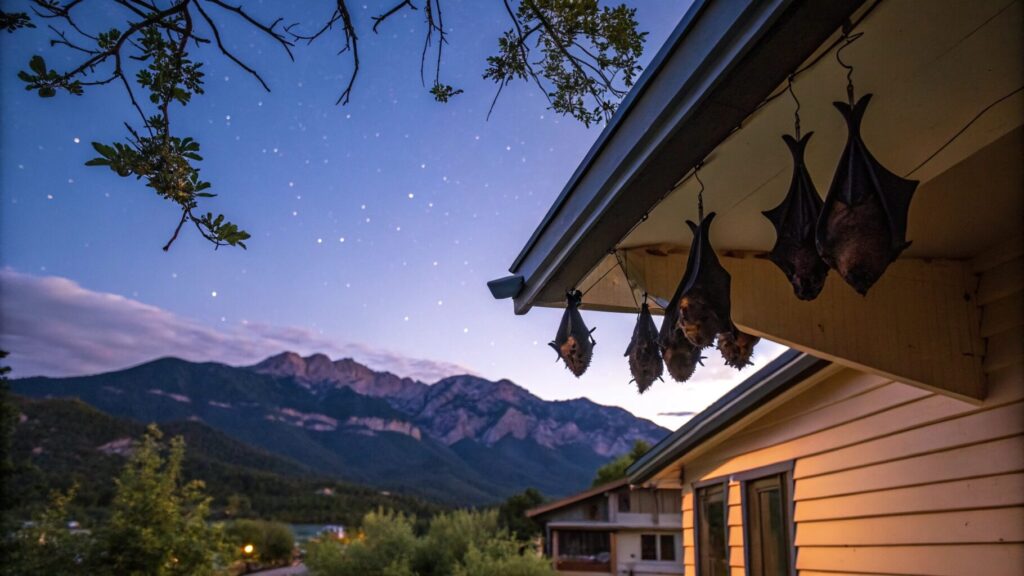Award-Winning Pest Control & Wildlife Removal
Bats play a role, in the ecosystem by consuming amounts of insects; nonetheless, their presence near residential and commercial areas can present notable hazards. Though bats are safeguarded species it is essential to prevent them from residing in buildings where people reside or work. As professionals offering bat removal services in Denver, we recognize the risks associated with bats. When bats enter buildings where people live or work certain important issues arise.
CALL (720) 394-6335 NOW FOR A FREE IN-HOME INSPECTION AND LET BLUE TICK PEST AND WILDLIFE CONTROL SPECIALISTS HELP YOU GET RID OF BATS TODAY!
One common scenario involving humans and bats occurs when young bats are in the process of learning to fly. If you happen to find a bat inside your residence it's important to reach out to your doctor or get in touch with the health department for advice on any possible health concerns that may arise. After addressing health issues related to the bats in your home the next step is to contact a professional bat removal specialist who can safely remove them and prevent their return. This will help ensure that your home is free, from any fungus and bat bugs.
Beware of bat droppings, also known as guano, which can pose health risks! Histoplasma is a fungus present in both bat and bird droppings that can lead to histoplasmosis. This ailment is acquired by inhaling spores from dried up particles. Although histoplasmosis isn't prevalent in Colorado normally it's crucial to handle guano with care. Our team of bat control experts ensures the removal of guano treats the areas thoroughly and gets rid of any lingering spores, bacteria or pathogens left by the bats or their droppings.
Bat bugs are sometimes confused with bed bugs. They prefer bats as their hosts rather than humans and tend to prosper in dim environments such as attics; however, if bat colonies are relocated these bugs may relocate themselves to living spaces in search of hosts. Our services for managing bat issues involve treatments for your residence using non-toxic pesticides that pose no harm to people and pets when applied correctly. The treatments stay active for around 90 days to keep your house shielded from bat bugs following the completion of bat exclusion efforts.

The best and fastest method to get rid of bats from your house is by enlisting the help of a certified wildlife professional in bat exclusion services like Blue Tick Pest & Wildlife Control. We focus primarily on removing and preventing bats from returning to their spots each year; it’s important to make sure they are entirely kept out of your property. If not dealt with properly and promptly the bat population can expand leading to increased chances of contact between humans and bats as potential exposure, to bat droppings and the presence of bat bugs.
BAT BUG FACT: As this sounds like a horrible oxymoron, it could be worse! Bat bugs have not been shown to transmit diseases such as rabies to humans after hosting on bats.
Get in touch with us now for expert bat removal services in Denver or surrounding locations. We also make service calls to certain mountain locations!
If you have bats causing trouble, at home don't delay taking action to address the issue promptly! Reach out to Blue Tick Pest & Wildlife Control by dialling (720) 394‑6335 to schedule an inspection at your residence for expert assistance in efficiently removing and excluding bats, from your property.
| Arvada Bat Control | Golden Bat Control | Larkspur Bat Control | Perry Park Bat Control |
| Aurora Bat Control | Greenwood Village Bat Control | Littleton Bat Control | Roxborough Park Bat Control |
| Broomfield Bat Control | Highlands Ranch Bat Control | Lone Tree Bat Control | Sedalia Bat Control |
| Castle Pines Bat Control | Ken Caryl Bat Control | Morrison Bat Control | Thornton Bat Control |
| Castle Rock Bat Control | Lakewood Bat Control | Parker Bat Control | Westminster Bat Control |
| Wheat Ridge Bat Control |
| Grand Lake Bat Control | Silverthorne Bat Control |
| Granby Bat Control | Breckenridge Bat Control |
| Frisco Bat Control |